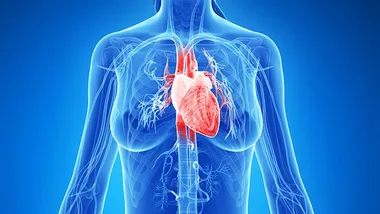Most of us know that heart failure is a life threatening condition in which the heart is unable to pump enough blood to meet the needs of the body.
Most of us also know that exercise and diet are important elements in the fight to prevent heart attacks, which are often characterised by the typical symptoms of breathlessness, swollen limbs and fatigue.
But what many do not realise is that diet and exercise are also key elements in the recovery process in the weeks and months following a heart attacks.
A recent study by Australian researchers showed that most of the heart attack patients who do not take up rehabilitation measures after their heart event may go on to suffer a second heart attack, risking permanent disability and even death.
A new study from Mexico has underlined the need for major lifestyle changes for heart attack patients if their recovery is to continue and protect them from a second heart event.
The study, headed by cardiology researcher Dr Arturo Orea of the National Institute of Respiratory Disease in Mexico City, found that 40% of patients with heart failure in Mexico have diabetes, 41% have high cholesterol, 57% have high triglycerides (which contribute to arthrosclerosis), one-quarter are obese, 55% have high blood pressure, 31% smoke and less than 1% are physically active.
Regular aerobic exercise is recommended for patients with heart failure to improve symptoms and the ability to do daily activities.
But more evidence is needed on the benefits of a healthy diet, says Dr Orea. “There are no specific guidelines on how much carbohydrate, fat and protein patients with heart failure should eat,” says Dr Orea. “Sodium and fluid restriction are advised but there are no guidelines on other minerals.”
Dr Orea’s group investigated the effect of diet and exercise in patients with heart failure. They found that after just four months, 84 patients who ate a low carbohydrate diet (40-50% carbohydrates, 30-40% protein and 20% fat) and did aerobic and resistance exercise had reduced blood pressure and total body water compared to a control group of 38 patients, who did not alter their diet or exercise habits.
“These results indicate that a low carbohydrate diet and exercise are beneficial for patients with heart failure,” said Dr Orea. “This could be because the respiratory coefficient of carbohydrates is higher than fat and proteins which means they require more oxygen and respiratory effort to metabolise. In addition, a higher intake of unsaturated fat could improve the integrity and function of cells. Exercise improves endothelial function (increasing vessel diameter and blood flow), so there is better delivery of nutrients and oxygen to the cells plus removal of waste.”
The group also studied the effects of sodium potassium and magnesium levels in heart failure patients who died during a two year period.
They found that sodium levels in patients who died were on average less than half that of healthy patients (800mg vs 1700 mg), indicating that extreme restriction of salt in a diet may not be healthy.
They also found that patients who consumed less than 200 mg/day of magnesium had a nearly three times higher risk of hospitalisation or death.
“Patients with heart failure should ensure that they get enough magnesium in their diet by eating dark leafy greens, nuts, fish, whole grains and bananas,” says Dr Orea.
“Our finding of a lower sodium intake in patients who died might be explained by the fact that when sodium intake reduction is excessive, the hormone system that regulates blood pressure and fluid retention is more active, which can increase blood pressure.
“Heart failure is a growing epidemic across the world and clearly, medication alone is not a sufficient approach. Lifestyle modification must be a central part of management in heart failure patients, not only for treatment but also for prevention.”



